foot in mouth: October 2010 Archives
With dances that use an academic or codified language, the route to the matter at hand is relatively direct. Not so when not steps, not structure, but method--more intangible, less empirically provable--is the reigning force. In that case, it doesn't do for the critic to isolate effects; they are mere flotsam--analogues. Of course, writers do isolate all the time, with the result that the dance sounds inane (which sometimes it is). The alternative, though, is to make the dance sound DOA--immaterial, purely ideational (which often it also is). Argh!
These two lousy and endemic approaches--along with the small audiences--probably make daily newspapers chary of covering experimental work. I love the challenge--but I also sympathize with my editors (and imagine their eyebrows raised).
Here's a chunk of my Financial Times review of Ralph Lemon's video talk slash dance at BAM, How Can You Stay in the House All Day and Not Go Anywhere? in which he cannot imagine dance as a vehicle for loss (though talking and video are okay):
More than most dances and multimedia works, Ralph Lemon's How Can You Stay in the House All Day and Not Go Anywhere? has a message: art will always translate life inadequately. Because it attempts this impossible translation, How Can You (in the midst of a US tour) proves a paradox - fruitful at first, then exhausted by zealous doubt.
Since we last encountered the 58-year-old choreographer, visual artist and writer - for the third and final part of his Geography epic, in 2004 - Lemon has lost his partner to cancer. He recounts this awful fact seated in a white plastic patio chair near the front of the stage; beside him is a large video screen that will supplement his eloquent ruminations on the tenuous connection between life and art with scenes from both.
To ennoble his loss, he explains, he asked his small-town Mississippi muse - a man named Walter, aged 102 - to re-enact scenes from Andrei Tarkovsky's 1972 Solaris, the most metaphysical of science-fiction films, in which a man in outer space hallucinates his dead wife. Walter, decked out in a homemade spacesuit, plays the husband and his 82-year-old wife, Edna, sits in for the resurrected wife.
The faux-wood walls and plethora of plastic furniture covers in the old couple's home translate 1970s sci-fi tackiness with delightfully uncanny accuracy but their love has lasted too long to approach tragic hauntedness. This disjuncture turns out to be the point. All the mediations involved in an ageing one-time sharecropper rehearsing cinematic Soviet love scenes that stand in for the choreographer's own recent loss cause us to become unmoored, like the grief-stricken.
How Can You relinquishes this layered depth, however, when...
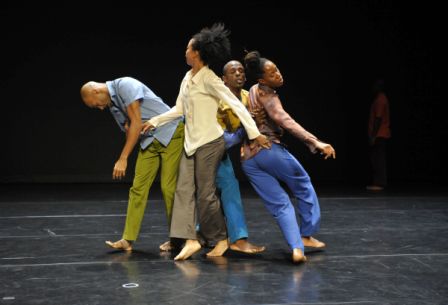
Second-act dancing. Photo by Stephanie Berger.
For the whole Lemon review, click here.
And here is the start of my review this week of Alain Platel's Out of Context--for Pina, for the Flanders Ballets C de la B, which the choreographer founded in 1984. At the Joyce through this Sunday. The Platel is ultimately more engrossing than the Lemon; it may not not be so rigorous or smart, but it is also not so tunnel-visioned. It doesn't succumb to reductio ad absurdam thinking. The dancers are allowed to matter:
If Brueghel and Bosch had met, they might have come up with Alain Platel's Out of Context - for Pina, a panorama of movement ranging from the mechanistic to the deranged.
The stage is a hive of divergent activity. At any given moment - or the best moments, anyway - in this desultory two-hour show, one cluster of dancers may be progressing methodically from bone to bone and joint to joint in a cubism of motion; another group stand far upstage with their backs to us like stone goddesses, chests bare and orange blankets tied around their waists; and a man and woman play prehensile footsie. The intrigue in these semi-private dramas is the body's imminent unravelling.
In the first New York appearance of Les Ballets C de la B since 1996, the nine highly individual dancers protrude their butts, hang their heads, loll their tongues, and let their ribcages slip and slop, their eyes grow askew, their feet smack the floor. They do this in unison - that paragon of order. The border between "movement disorder" and "dance" begins to warp.
Disordered. Photo by Chris Van der Burght
Inspired by the motor disease chorea, Platel - a movement therapist before he was a choreographer - wants to discover the common ground between these extremes, dancing and disorder. From the evidence, I'd venture that it is extravagance. The difference is that virtuosic dancing pays for its excess with the body's skilled economy. Disordered movement, on the other hand, is excessive through and through; it blurs periphery and core, the essential and the extraneous. A dance with a messy structure can give pleasure, as Platel's does, but a body in disarray turns out to be agonising to behold, out of context or not.
So Out of Context - for Pina mixes intermittent agony with the pleasure....
For the whole C de la B review, click here.
We critics have grown rather grouchy about City Center's annual smorgasbord, the Fall for Dance festival--which is exactly like looking a gift horse in the mouth, as those $10 tickets have to be paid for by someone and it's certainly not the audience. The shows--five separate programs, with four distinct works on each-- sustain a huge loss, offset by corporate and state support.
My frustration derives from how close the festival is to getting it right. The offerings--all kinds of dance from all over--are largely worthy. But they are not always shown to best effect. For example, the opening program included three generations of modern dance and then, anomalously, a work of Odissi, an Indian classical dance form. Worse, two of the modern pieces--one by newcomer Andrea Miller, the other by Twyla Tharp--were close in spirit without being close enough for us to digest in a single sitting. We needed them more alike or less.
The third program, on the other hand--with works by Bill T. Jones, the late Ulysses Dove, flamenco dancer Rafaela Carrasco and, the revelation of the festival, Rio de Janeiro's Companhia Urbana de Dança--featured brilliant curation, with each work gaining by its proximity to the others. Together with four distinct notions of theatricality, the rhythmic contrasts between Carrasco and the Brazilians, and the African-inflected use of the torso in Jones, Dove, and the Brazilians, made for a rich evening.
I especially liked the leap from the in-your-face stylizations of Dove's Red Angels for the New York City Ballet (Adrian Danchig-Waring was the best I've seen him, with an astoundingly fluid, torquing torso) to the matter-of-fact manner and lines of Jones' Duet-- a fascinating dance all about divides that leaves you feeling your head and heart as different planets.
Here is most of my grumpy review of the opening Fall for Dance program (highlight: Cunningham's Xover), which took place about ten days ago:
Fall for Dance - five distinct crazy quilt programmes over two weeks, all now sold out - may celebrate the start of the season, but opening night sounded a different autumnal note: dread.
The evening began with the New York premiere of the late Merce Cunningham's Xover, from 2007. I can count on one hand how many New York performances of the Cunningham troupe remain before it disbands, in 2012, and the dances are leased out to groups that have not devoted themselves to the great choreographer's demanding idiom.
Daniel Madoff and Julie Cunningham in Xover
Tuesday's lumpily curated show offered a scary peek - with Twyla Tharp standing in for Cunningham. For The Golden Section, Miami City Ballet substituted Doris Day pertness and the hair-tossing of a Victoria's Secret model for a butteriness in which the roll of a shoulder ripples down the spine to loosen the hip, then knee. Without Tharp's signature ragdoll insouciance, the comedy was lost to impertinence and pomposity.The dancers in New Yorker Andrea Miller's I Can See Myself in Your Pupil, by contrast, seem to have grown up with these luscious, rubber-limbed, eminently watchable steps. Miller's translation problem is between dance and whatever it is standing in for. Social behaviour? Psychological conundrum?
Increasingly rare in modern dance is movement taken as an end in itself, which in Cunningham's case has the paradoxical effect of releasing vast metaphor. Tuesday's single foreign and classical work.....
For the whole Financial Times review, click here.
Here is a chunk of my Financial Times review of the festival debuts on the second and third programs:
With its low ticket prices and focus on variety, the annual Fall for Dance festival aims to attract new audiences to dance. But it also brings new forms of dance to old audiences.Rafaela Carrasco has been called the Twyla Tharp of flamenco, which seems a senseless designation until you see her dance. In her mid-thirties and rarely presented in New York, this Spaniard may honour flamenco's fundamentals but she extricates them from the usual death-driven, love-parched posturing. Her legs outrun her, as in a Looney Tune; her feet point slightly outward à la Charlie Chaplin so they seem a size too big for the knotty rhythms they finesse.
The effect is not to make a mockery of flamenco but to free it from an increasingly predictable stance. By adding loosey-goosey goofiness to the arsenal, Carrasco confirms that flamenco is not merely a manner of speaking but a language, equipped to say anything.
Companhia Urbana de Dança - made up of young men from the outskirts of Rio de Janeiro - does the same for hip-hop. Too often this street form hits the stage without anyone considering the implications of this change in venue. The stress is still on tricks, reeled out in grandstanding fashion one after another. But in the mysterious and moving ID: Entidades - created this year by Companhia director Sonia Destri and the nine performers - whatever once counted as a trick becomes an accidental scrap of being. Only Philadelphia's Rennie Harris has taken hip-hop this far.
(From left): Raphael Russier; at the bottom center with open hand - André Feijao; center, profile looking left - Tiago Sousa; profile looking right - Miguel Fernandez
The distinct yet subdued dancers have their specialities - sideways gyrations of the torso and so forth - but they are in the service of a foreboding, slightly mournful whole. The dance begins with the men sitting on the floor in a row along the back with their arms clasped around their knees. They are waiting and watching for someone to crack the stillness open. Whether in solos or sudden waves of running or walking, they move with a softness I recognise from other Brazilian forms, such as capoeira. ID: Entidades has stripped hip-hop of its bravado and made it as eerie as breathing.The 26-year-old Taiwanese choreographer Shu-Yi Chou's [1875] Ravel and Bolero - winner of Sadler's Wells Global Dance Contest this inaugural year - also features young people behaving like themselves....
For my take on Emanuel Gat's solo for extraordinary dancer Roy Assaf to Coltrane, as well as more on Chou's winning piece, click here.
Often it is not the choreography per se but the notions about humanity, about artmaking and politics, about style or its lack thereof, that strike me hardest. This was the case with the late Pina Bausch's Vollmond (and much else that she has created) and Ohad Naharin's potpourri at the Joyce. Here's the Bausch review:
Zany, rainy, overlong Vollmond (Full Moon) - the first of Pina Bausch's works to appear stateside since her death from cancer in June 2009, at age 68 - begins with two men swinging water bottles so empty that the air whistles through them. The dance ends with the cast of 12 cavorting in water up to their knees. And yet, as so often with this beloved prolific choreographer, the two-and-a-half hour work is essentially static. Wildly entertaining in its antics, eloquent and evocative in its magnificent international cast's gloomy solos, Full Moon ultimately offers a moribund worldview because a solipsistic one. Everyone invents - and howls at - their own separate moon.
Water fight
In the past few decades, as Bausch increased her performers' role in shaping their parts, the dances have consisted of two kinds of scenes. The first, involving brilliant physical comedy, is social - which in the world according to Bausch means sexual. Bossy Azusa Seyama, for example, gives mute, anxious Michael Strecker a lesson in unhooking a bra. (Bausch women do not generally wear bras, which makes them seem mildly lunatic in their low-cut, floor-length satin gowns, as if they had mistaken the fancy outfits for nighties.) When the task takes him eight seconds, she announces: "Women cannot wait that long."
The women are desperate, domineering, self-involved and, even when they are brushing their teeth, in seducer mode. The men, in sombre button-downs and trousers, are puppyishly eager to please so they can get what they want. No one ever crosses over.
The solos that alternate with these moments are more individual - less bound by gender - but no more liberating. They emphasise the most expressive part of the body in Bausch, the upper back, from which the arms gain nourishment and direction as tendrils do from a plant. The upper back aspires and cowers, with the arms flinging out and folding up as the legs collapse.
Whatever people reveal in these soliloquys, however, does not show up in the group interactions. Nothing ever bleeds into anything else, growing more nuanced along the way. Bausch has created a complete world in Full Moon, but - as long as its inhabitants are incapable of affecting one another or being touched by circumstance - it is not a true one.
And from my review of Batsheva director Ohad Naharin's mixtape, Project 5:
In artistic director Ohad Naharin's Project 5, three women stand at the lip of the stage and belt into mikes - in Hebrew. Maybe we are not supposed to know they are chanting about a "zealot" who "farts" their guts on to the pavement when they go out for sushi, hummus, ice cream. Or maybe we wouldn't know what to make of this tragedy even if we could understand the words - we foreigners, tuning in to the latest episode of the long-running Middle East Show for the sake of the spectacle. Or maybe it is the Israelis who trivialise or theatricalise - and which is it? - the situation. The choreographer does not say.
Cynical chic
Since he took the helm of Tel Aviv's Batsheva Dance Company two decades ago and gave it an international presence, Naharin's work has grown both more pointed and more ironical and oblique. Project 5 - spanning 19 years with three short works and one long excerpt - lays out this evolution.
Black Milk, from 1991, unfolds like a drama. One woman after another paints her face with mud. (This week, however, it will be men: the Project 5 cast featured women until the weekend, then switched to men.) The mask frees the women to catapult into the air, grapple with each other like sisters, and invent scapegoats - in short, become a tribe. Naharin offers this portrait straight; in 1991, truth in representation still seemed possible.
Fast-forward to....
For the whole Batsheva review, click here.
As for Sankai Juku, at the Joyce through the end of this week, the problem is less the troupe's ideas about butoh than their ideas about experience: they don't seem to understand that representing butoh rather than performing it is at crosspurposes with the organic disorientation it has to offer us. More generally, any dance that takes you out of the experience without accounting for that alienation presents a problem, in my view.
Here is my solution to being thoroughly exasperated for an hour and a half: a somewhat goofy review. Whenever possible, self-deprecate rather than destroy, I say.
This illustrious 35-year-old troupe of eight bald Japanese men powdered white from head to toe is known for practising butoh, "the dance of darkness". But, as with so much Sankai Juku produces, the 2008 Tobari: As if in an Inexhaustible Flux (at the Joyce for two weeks before heading west) is butoh lite: the dance of dimness.Butoh grew up in the shadow of Hiroshima and Nagasaki. It imagines consciousness as an organism, like a flower except not so lovely. The torso, with its capacity to shrink and expand, is the locus of action, imploding like an excruciatingly slow rewind of a mushroom cloud.
The pace of Tobari, though, is middling, as if troupe choreographer Ushio Amagatsu worried we might get bored. Worse, the music - an improbable mix of the cosmic and the sappy by Sankai Juku regulars Takashi Kako, Yas-Kaz and Yoichiro Yoshikawa - sets this pace, so the dancers seem to be responding to external cues, not moving from internal impulse. As for those devolving torsos, Tobari replaces them with busy hands.
Sankai Juku clan bows over fetal leader
The men behave like Marcel Marceau. One man wafts his hands in a pretend stream. Another pinches an invisible wire between thumb and forefinger. Someone else slides open a glass door. A trio snatches at invisible bugs. Instead of revealing motion where you expect stasis, the dancers create stasis - imaginary objects - where you expect unobstructed flow, empty space.
There are passages of dance, in which the performer, not the surrounding air, is transformed. But the pantomime gets our attention because it is so precisely rendered and so off the wall. What does a universe chock-a-block with stuff have to do with "inexhaustible flux"?
It is possible I am missing something - or everything. The word tobari means....
For what I may be missing, click here.
AJ Blogs
AJBlogCentral | rssculture
Terry Teachout on the arts in New York City
Andrew Taylor on the business of arts & culture
rock culture approximately
Laura Collins-Hughes on arts, culture and coverage
Richard Kessler on arts education
Douglas McLennan's blog
Dalouge Smith advocates for the Arts
Art from the American Outback
Chloe Veltman on how culture will save the world
For immediate release: the arts are marketable
No genre is the new genre
David Jays on theatre and dance
Paul Levy measures the Angles
Judith H. Dobrzynski on Culture
John Rockwell on the arts
innovations and impediments in not-for-profit arts
Jan Herman - arts, media & culture with 'tude
dance
Apollinaire Scherr talks about dance
Tobi Tobias on dance et al...
jazz
Howard Mandel's freelance Urban Improvisation
Focus on New Orleans. Jazz and Other Sounds
Doug Ramsey on Jazz and other matters...
media
Jeff Weinstein's Cultural Mixology
Martha Bayles on Film...
classical music
Fresh ideas on building arts communities
Greg Sandow performs a book-in-progress
Harvey Sachs on music, and various digressions
Bruce Brubaker on all things Piano
Kyle Gann on music after the fact
Greg Sandow on the future of Classical Music
Norman Lebrecht on Shifting Sound Worlds
Joe Horowitz on music
publishing
Jerome Weeks on Books
Scott McLemee on books, ideas & trash-culture ephemera
theatre
Wendy Rosenfield: covering drama, onstage and off
visual
Public Art, Public Space
Regina Hackett takes her Art To Go
John Perreault's art diary
Lee Rosenbaum's Cultural Commentary
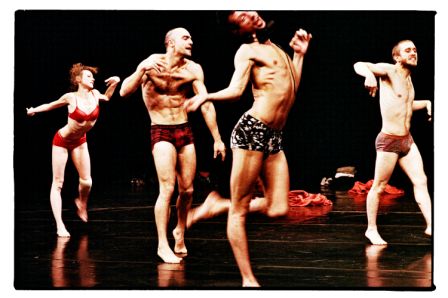
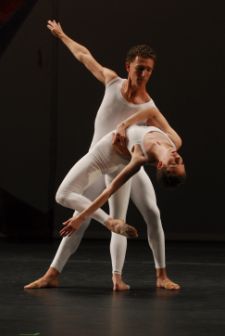
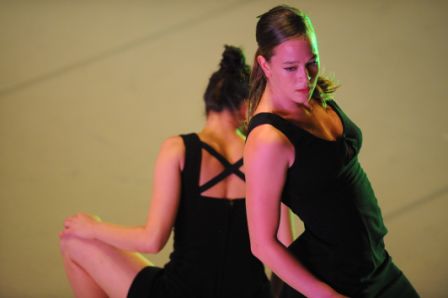
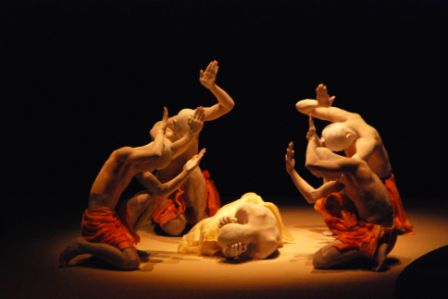

Recent Comments